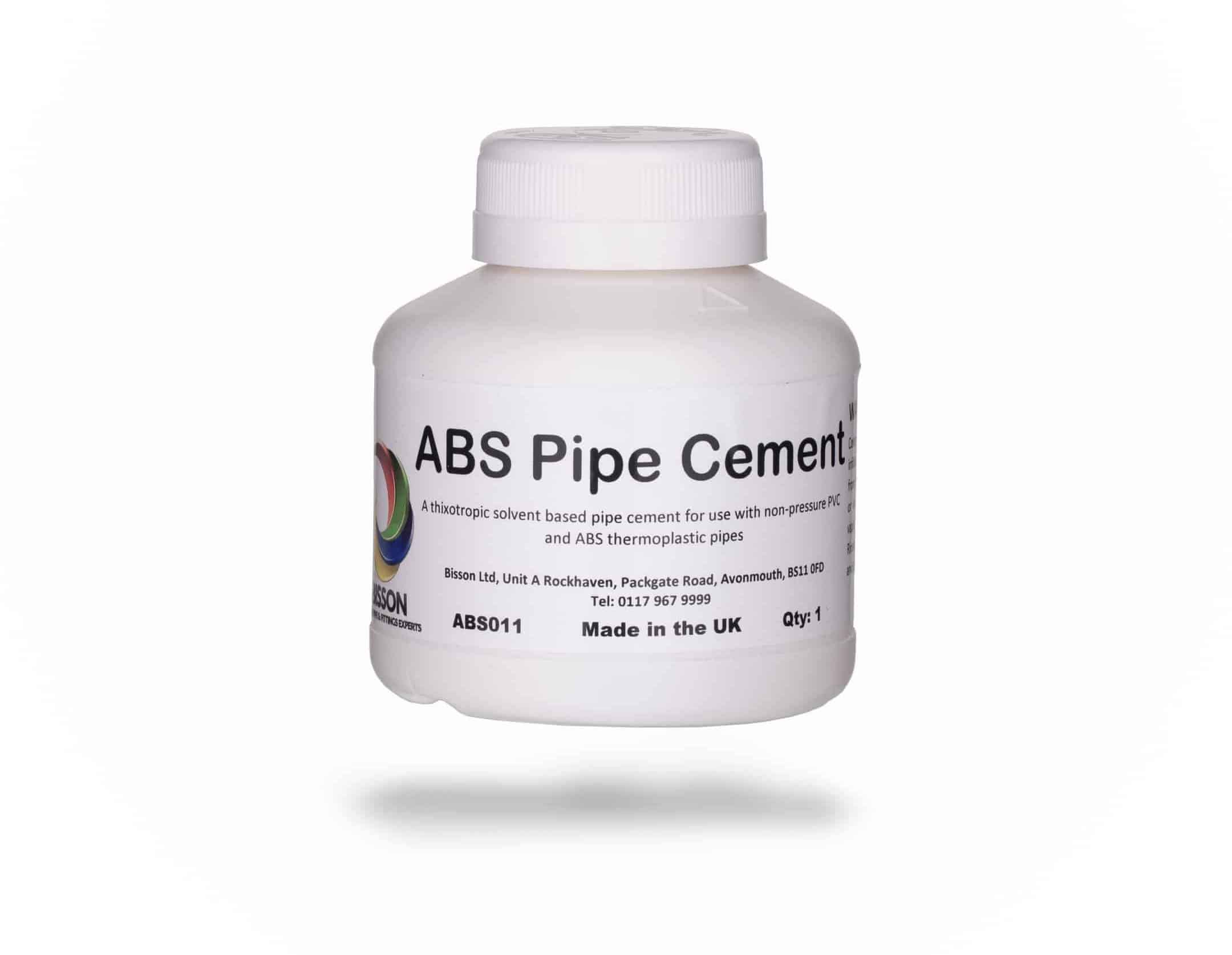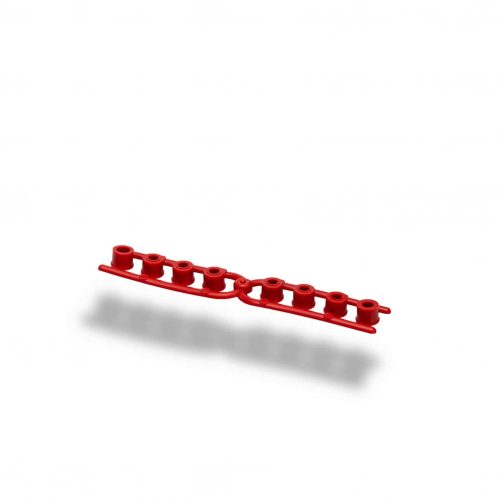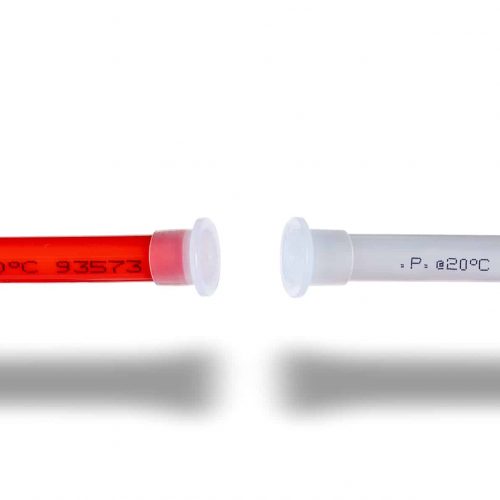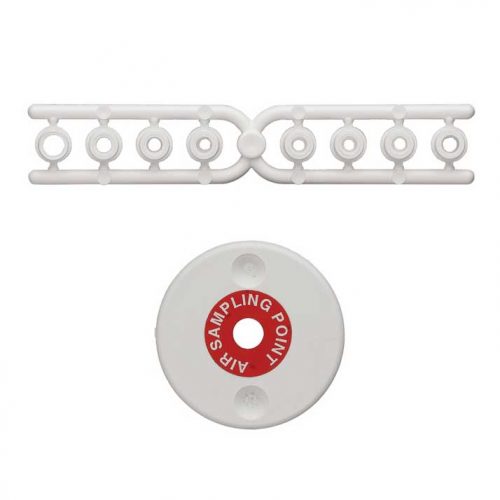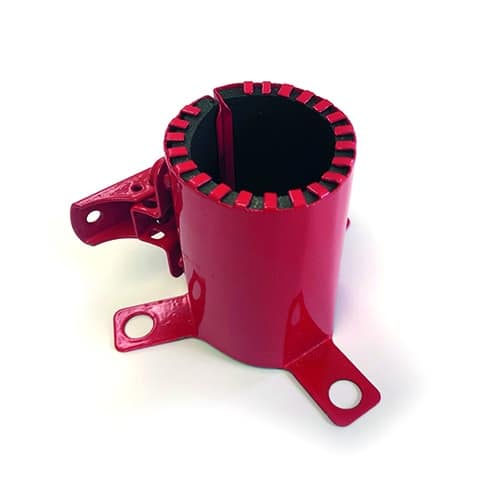Used to connect the aspirating pipe to 10mm OD flexible nylon tubing.
ABS PIPE CEMENT
Descripción
1: Identification of the substance/mixture and of the company/undertaking
1.1. Product identifier
Product name ABS Pipe Cement
Container size 250mls,125ml
1.2. Relevant identified uses of the substance or mixture and uses advised against Identified uses ABS Cement
1.3. Details of the supplier of the safety data sheet
Supplier
Trade Grade Products Limited
10 Victory Close
Woolsbridge Industrial Park
Three Legged Cross, Wimborne
Dorset, BH21 6SX
Tel: 01202 820177 (Mon-Fri 09:00 -17:00)
Fax: 01202 814011
E-mail:- sales@thegluepeople.co.uk
1.4. Emergency telephone number
National emergency telephone UK +44 (0)1202 820177 (Monday – Friday 09:00 – 17:00) number
SECTION 2: Hazards identification
2.1. Classification of the substance or mixture
Classification
Physical hazards Flam. Liq. 3 – H226
Health hazards Eye Irrit. 2 – H319 Elicitation – EUH208 STOT SE 3 – H336
Environmental hazards Not Classified
Classification (67/548/EEC or Xi;R36. R10,R66,R67.
1999/45/EC)
2.2. Label elements
Pictogram

Signal word
Warning
Hazard statements H226 Flammable liquid and vapour.
H319 Causes serious eye irritation.
H336 May cause drowsiness or dizziness.
EUH208 Contains EPOXY RESIN (Number average MW <= 700 ). May produce an allergic reaction.
Precautionary statements
P210 Keep away from heat, hot surfaces, sparks, open flames and other ignition sources. No smoking.
P233 Keep container tightly closed.
P261 Avoid breathing vapours.
P271 Use only outdoors or in a well-ventilated area.
P280 Wear protective clothing, gloves, eye and face protection.
P305+P351+P338 IF IN EYES: Rinse cautiously with water for several minutes. Remove contact lenses, if present and easy to do. Continue rinsing.
P314 Get medical advice/attention if you feel unwell.
P370+P378 In case of fire: Use dry powder, dry sand or dry earth to extinguish.
P501 Dispose of contents/container in accordance with national regulations.
P102 Keep out of reach of children.
P501 Dispose of contents/container in accordance with national regulations.
Contains
BUTANONE
2.3. Other hazards
SECTION 3: Composition/information on ingredients
3.2. Mixtures
BUTANONE 60-100%
CAS number: 78-93-3 EC number: 201-159-0 REACH registration number: 01- 2119457290-43
Classification Classification (67/548/EEC or 1999/45/EC)
Flam. Liq. 2 – H225 F;R11 Xi;R36 R66 R67
Eye Irrit. 2 – H319
STOT SE 3 – H336
CYCLOHEXANONE 5-10%
CAS number: 108-94-1 EC number: 203-631-1
Classification Classification (67/548/EEC or 1999/45/EC)
Flam. Liq. 3 – H226 R10 Xn;R20
Acute Tox. 4 – H332
EPOXY RESIN (Number average MW <= 700 ) <1%
CAS number: 25068-38-6 EC number: 500-033-5
Classification Classification (67/548/EEC or 1999/45/EC)
Skin Irrit. 2 – H315 R43 Xi;R36/38 N;R51/53
Eye Irrit. 2 – H319
Skin Sens. 1 – H317
Aquatic Chronic 2 – H411
The Full Text for all R-Phrases and Hazard Statements are Displayed in Section 16.
SECTION 4: First aid measures
4.1. Description of first aid measures
General information
Remove affected person from source of contamination.
Inhalation
Move affected person to fresh air at once. Get medical attention.
Ingestion
Rinse mouth thoroughly with water. Do not induce vomiting. Get medical attention.
Skin contact
Remove from skin with paper or towel. Wash skin thoroughly with soap and water. Get medical attention if any discomfort continues.
Eye contact
Rinse immediately with plenty of water. Remove any contact lenses and open eyelids wide apart. Continue to rinse for at least 15 minutes. Get medical attention. Show this Safety Data Sheet to the medical personnel.
4.2. Most important symptoms and effects, both acute and delayed
General information
Prolonged and repeated contact with solvents over a long period may lead to permanent health problems.
Inhalation
There may be a feeling of tighness in the chest with shortness of breath. Exposure may cause coughing or wheezing.
Ingestion
There may be soreness and redness of the mouth and throat. Fumes from the stomach contents may be inhaled, resulting in the same symptoms as inhalation.
Skin contact
There may be irritation and redness at the site of contact
Eye contact
Irritating to eyes. Symptoms following overexposure may include the following: Redness. Pain.
4.3. Indication of any immediate medical attention and special treatment needed
Notes for the doctor Show this safety data sheet to the doctor in attendance.
SECTION 5: Firefighting measures
5.1. Extinguishing media
Suitable extinguishing media Water spray, dry powder or carbon dioxide.
5.2. Special hazards arising from the substance or mixture
Specific hazards
Protection against nuisance dust must be used when the airborne concentration exceeds 10 mg/m3. Extremely flammable.
Hazardous combustion
Oxides of carbon. Thermal decomposition or combustion may liberate carbon oxides and products other toxic gases or vapours.
5.3. Advice for firefighters
Special protective equipment
Wear positive-pressure self-contained breathing apparatus (SCBA) and appropriate protective for firefighters clothing.
SECTION 6: Accidental release measures
6.1. Personal precautions, protective equipment and emergency procedures
Personal precautions
Refer to section 8 of SDS for personal protection details. Turn leaking containers leak-side up to prevent escape of liquid. Mark contaminated areas with signs and prevent access to unauthorised personnel. Avoid inhalation of vapours and contact with skin and eyes. No smoking, sparks, flames or other sources of ignition near spillage.
6.2. Environmental precautions
Environmental precautions Do not discharge into drains or watercourses or onto the ground. Contain the spillage using bunding.
6.3. Methods and material for containment and cleaning up
Methods for cleaning up Eliminate all sources of ignition. No smoking, sparks, flames or other sources of ignition near spillage. Provide adequate ventilation. Absorb in vermiculite, dry sand or earth and place into containers. Containers with collected spillage must be properly labelled with correct contents and hazard symbol.
6.4. Reference to other sections
Reference to other sections
For personal protection, see Section 8. For waste disposal, see section 13.
SECTION 7: Handling and storage
7.1. Precautions for safe handling
Usage precautions
Keep away from heat, sparks and open flame. Static electricity and formation of sparks must be prevented. Avoid inhalation of vapours and spray/mists. Avoid spilling. Avoid contact with skin and eyes.
7.2. Conditions for safe storage, including any incompatibilities
Storage precautions
Store in tightly-closed, original container in a well-ventilated place. Keep away from heat, sparks and open flame. Take precautionary measures against static discharges. Storage class Flammable liquid storage.
7.3. Specific end use(s)
Specific end use(s)
The identified uses for this product are detailed in Section 1.2.
SECTION 8: Exposure Controls/personal protection
8.1. Control parameters
Occupational exposure limits
BUTANONE
Long-term exposure limit (8-hour TWA): WEL 200 ppm(Sk) 600 mg/m3(Sk)
Short-term exposure limit (15-minute): WEL 300 ppm(Sk) 899 mg/m3(Sk)
CYCLOHEXANONE
Long-term exposure limit (8-hour TWA): WEL 10 ppm(Sk)
Short-term exposure limit (15-minute): WEL 20 ppm(Sk)
WEL = Workplace Exposure Limit
BUTANONE (CAS: 78-93-3)
DNEL
Consumer – Oral; Long term systemic effects: 31 mg/kg/day
Consumer – Dermal; Long term systemic effects: 412 mg/kg/day
Consumer – Inhalation; Long term systemic effects: 106 mg/m.
Industry – Inhalation; Long term systemic effects: 600 mg/m.
PNEC
– Fresh water; Long term 55.8 mg/l
– Marine water; Long term 55.8 mg/l
– Intermittent release; Intermittent release 55.8 mg/l
– STP; Long term 709 mg/l
– Sediment; Long term 284.7 mg/kg
– Soil; Long term 22.5 mg/kg
8.2. Exposure controls
Protective equipment

Appropriate engineering controls
Provide adequate ventilation.
Personal protection
Wear protective work clothing.
Eye/face protection
Wear tight-fitting, chemical splash goggles or face shield.
Hand protection
Chemical-resistant, impervious gloves complying with an approved standard should be worn if a risk assessment indicates skin contact is possible. The most suitable glove should be chosen in consultation with the glove supplier/manufacturer, who can provide information about the breakthrough time of the glove material. (Sk) noted above means can be absorbed through skin.
Other skin and body protection
Wear appropriate clothing to prevent any possibility of skin contact. Wear suitable gloves if prolonged or repeated skin contact is likely Hygiene measures Ensure suitable ventilation of area. Wash hands after handling. When using do not eat, drink or smoke. Do not smoke in work area.
Respiratory protection
If exposure limits are likely to be exceeded, use a full face mask fitted with an organic filter for short term exposures. For long term or high level exposures, or when spraying, compressed airline breathing apparatus should be used.
SECTION 9: Physical and Chemical Properties
9.1. Information on basic physical and chemical properties
Appearance
Viscous liquid.
Colour
Colourless to pale yellow.
Odour
Ketonic.
Flash point –
21 Deg.CÅãC
Upper/lower flammability or Lower flammable/explosive limit: 1.2% Upper flammable/explosive limit: 11.8% explosive limits
Relative density
0.92 @ ÅãC
Solubility(ies)
Immiscible with water.
Auto-ignition temperature
212 Deg.CÅãC
Viscosity
12500 mPa s @ 20 Deg.CÅãC
9.2. Other information
SECTION 10: Stability and reactivity
10.1. Reactivity
Reactivity Stable under recommended transport or storage conditions.
10.2. Chemical stability
Stability
Stable at normal ambient temperatures.
10.3. Possibility of hazardous reactions
Possibility of hazardous reactions
No known hazardous reactions if stored under normal conditions. Will not polymerise.
10.4. Conditions to avoid
Conditions to avoid Avoid heat.
10.5. Incompatible materials
Materials to avoid
Strong oxidising agents. Strong acids.
10.6. Hazardous decomposition products
Hazardous decomposition products
Oxides of carbon. Thermal decomposition or combustion may liberate carbon oxides and other toxic gases or vapours.
SECTION 11: Toxicological information
11.1. Information on toxicological effects
Acute toxicity – oral
Acute toxicity oral (LD₅₀ 2,000 mg/kg)
Species Rat
Acute toxicity – dermal
Acute toxicity dermal (LD₅₀ 2,000 mg/kg)
Species Rabbit
Acute toxicity – inhalation
Acute toxicity inhalation (LC₅₀ 20 vapours mg/l)
Species Rat
ATE inhalation (gases ppm) 30,927.84
ATE inhalation (vapours mg/l) 20
ATE inhalation (dusts/mists 10.31 mg/l)
General information
Prolonged and repeated contact with solvents over a long period may lead to permanent health problems.
Inhalation
Vapours may irritate throat/respiratory system. Symptoms following overexposure may include the following: Headache. Dizziness. Drowsiness. There may be irritation of the throat with a feeling of tightness in the chest. Exposure may cause coughing or wheezing.
Ingestion
May cause soreness and redness of mouth and throat. Ingestion may cause similar symptoms to that of inhalation.
Skin contact
No specific data. Prolonged and repeated contact may cause slight irritation.
Eye contact
Irritating to eyes.
Acute and chronic health hazards
Irritating to eyes.
Route of entry
Inhalation Ingestion.
Target organs
Central nervous system Eyes
Medical symptoms
Irritation of eyes and mucous membranes. Narcotic effect. Drowsiness. Dizziness.
SECTION 12: Ecological Information
12.1. Toxicity
Toxicity Not regarded as dangerous for the environment
Acute toxicity – fish LC50, >: > 100 mg/l,
Acute toxicity – aquatic plants IC₅₀, 72 hours: >100 mg/l, Algae
12.2. Persistence and degradability
Persistence and degradability Biodegradable in part only.
12.3. Bioaccumulative potential
Bioaccumulative potential No data available on bioaccumulation.
12.4. Mobility in soil
Mobility Readily absorbed into soil.
12.5. Results of PBT and vPvB assessment
Results of PBT and vPvB assessment
This substance is not identified as a PBT substance.
12.6. Other adverse effects
Other adverse effects No further relevant information available.
SECTION 13: Disposal considerations
13.1. Waste treatment methods
General information
Waste is classified as hazardous waste. Dispose of waste to licensed waste disposal site in accordance with the requirements of the local Waste Disposal Authority.
Disposal methods
Avoid the spillage or runoff entering drains, sewers or watercourses. Dispose of waste to licensed waste disposal site in accordance with the requirements of the local Waste Disposal Authority.
Waste class
Solvent Based Adhesives: 080409
SECTION 14: Transport information
Sea transport notes
Suitable UN approved container necessary
Air transport notes
Suitable UN approved container necessary
14.1. UN number
UN No. (ADR/RID) 1133
UN No. (IMDG) 1133
UN No. (ICAO) 1133
14.2. UN proper shipping name
Proper shipping name ADHESIVES
(ADR/RID)
Proper shipping name ADHESIVES
(IMDG)
Proper shipping name (ICAO) ADHESIVES
Proper shipping name (ADN) ADHESIVES
14.3. Transport hazard class(es)
ADR/RID class 3
IMDG class 3
ICAO class/division 3
Transport labels
14.4. Packing group
ADR/RID packing group II
IMDG packing group II
ICAO packing group II
14.5. Environmental hazards
Environmentally hazardous substance/marine pollutant
No.
14.6. Special precautions for user
EmS
F-E,S-D
Tunnel restriction code
(D/E)
14.7. Transport in bulk according to Annex II of MARPOL73/78 and the IBC Code
Transport in bulk according to Not applicable.
Annex II of MARPOL 73/78
and the IBC Code
SECTION 15: Regulatory information
15.1. Safety, health and environmental regulations/legislation specific for the substance or mixture
National regulations
The Chemicals (Hazard Information and Packaging for Supply) Regulations 2009 (SI 2009 No. 716).
Regulation (EC) No 1907/2006 of the European Parliament and of the Council of 18 December 2006 concerning the Registration, Evaluation, Authorisation and Restriction of Chemicals (REACH), establishing a European Chemicals Agency, amending Directive 1999/45/EC and repealing Council Regulation (EEC) No 793/93 and Commission Regulation (EC) No 1488/94 as well as Council Directive 76/769/EEC and Commission Directives 91/155/EEC, 93/67/EEC, 93/105/EC and 2000/21/EC, including amendments. Control of Substances Hazardous to Health Regulations 2002 (as amended).
EU legislation
Regulation (EC) No 1272/2008 of the European Parliament and of the Council of 16 December 2008 on classification, labelling and packaging of substances and mixtures (as amended). Regulation (EC) No 1907/2006 of the European Parliament and of the Council of 18 December 2006 concerning the Registration, Evaluation, Authorisation and Restriction of Chemicals (REACH) (as amended).
15.2. Chemical safety assessment
No chemical safety assessment has been carried out.
SECTION 16: Other information
Issued by
Quality Control Technician
Revision date
18/05/2015
Revision
2
Supersedes date
05/03/2015
SDS number
12086
Risk phrases in full
R10 Flammable.
R11 Highly flammable.
R20 Harmful by inhalation.
R36 Irritating to eyes.
R66 Repeated exposure may cause skin dryness or cracking.
R67 Vapours may cause drowsiness and dizziness.
Hazard statements in full
H225 Highly flammable liquid and vapour.
H226 Flammable liquid and vapour.
H315 Causes skin irritation.
H317 May cause an allergic skin reaction.
H319 Causes serious eye irritation.
H332 Harmful if inhaled.
H336 May cause drowsiness or dizziness.
H411 Toxic to aquatic life with long lasting effects.
EUH208 Contains EPOXY RESIN (Number average MW <= 700 ). May produce an allergic reaction.

